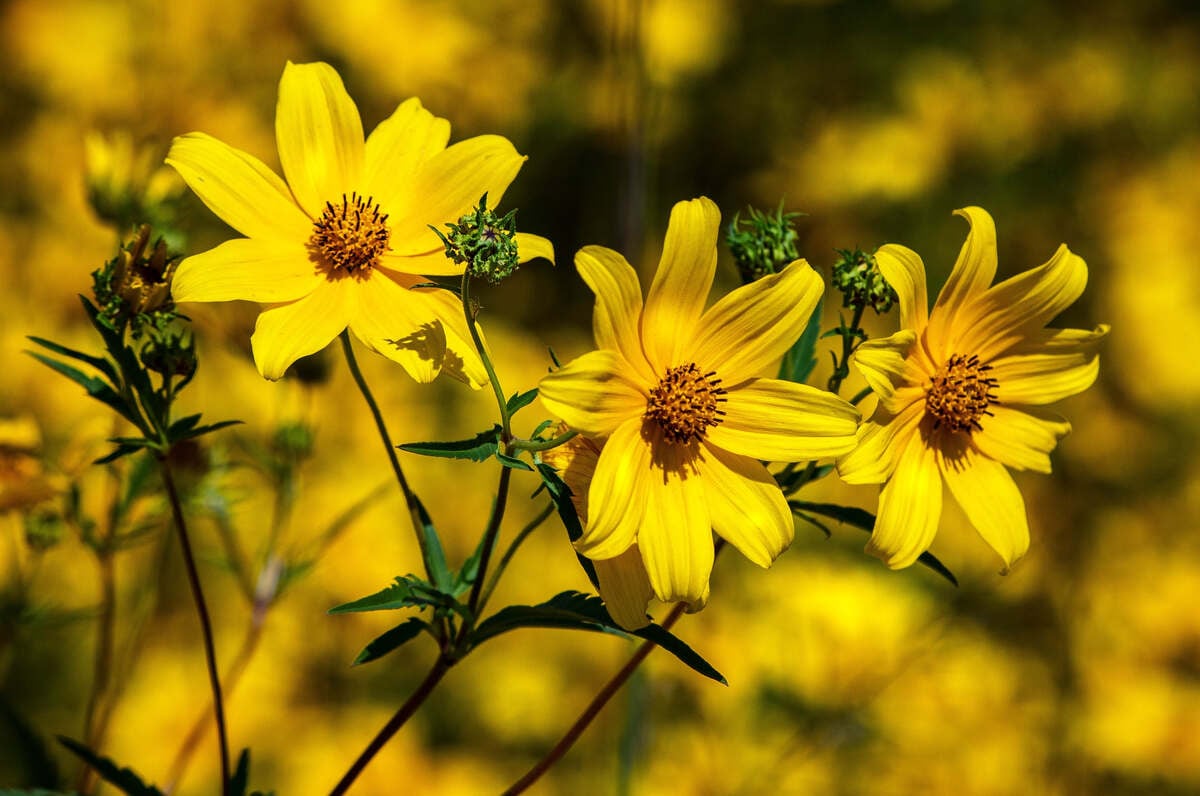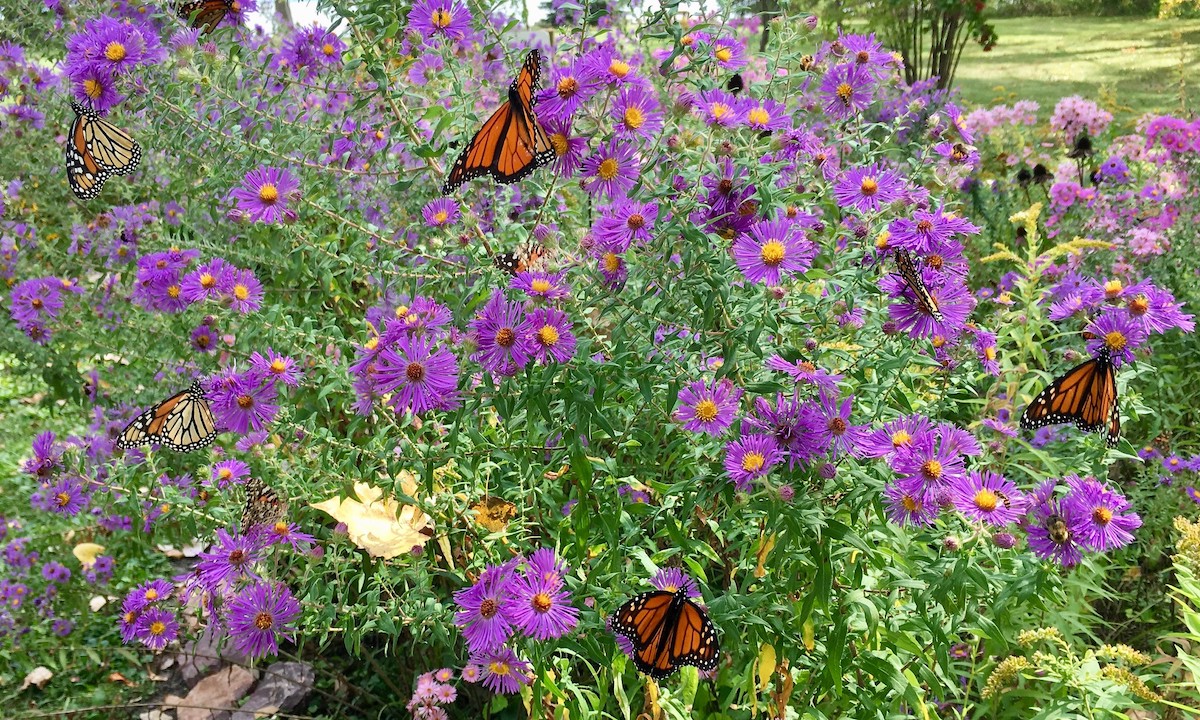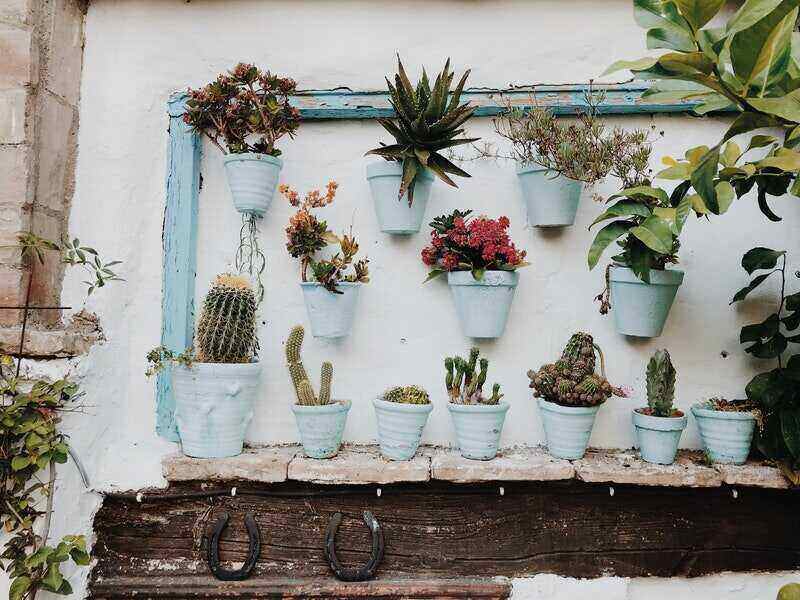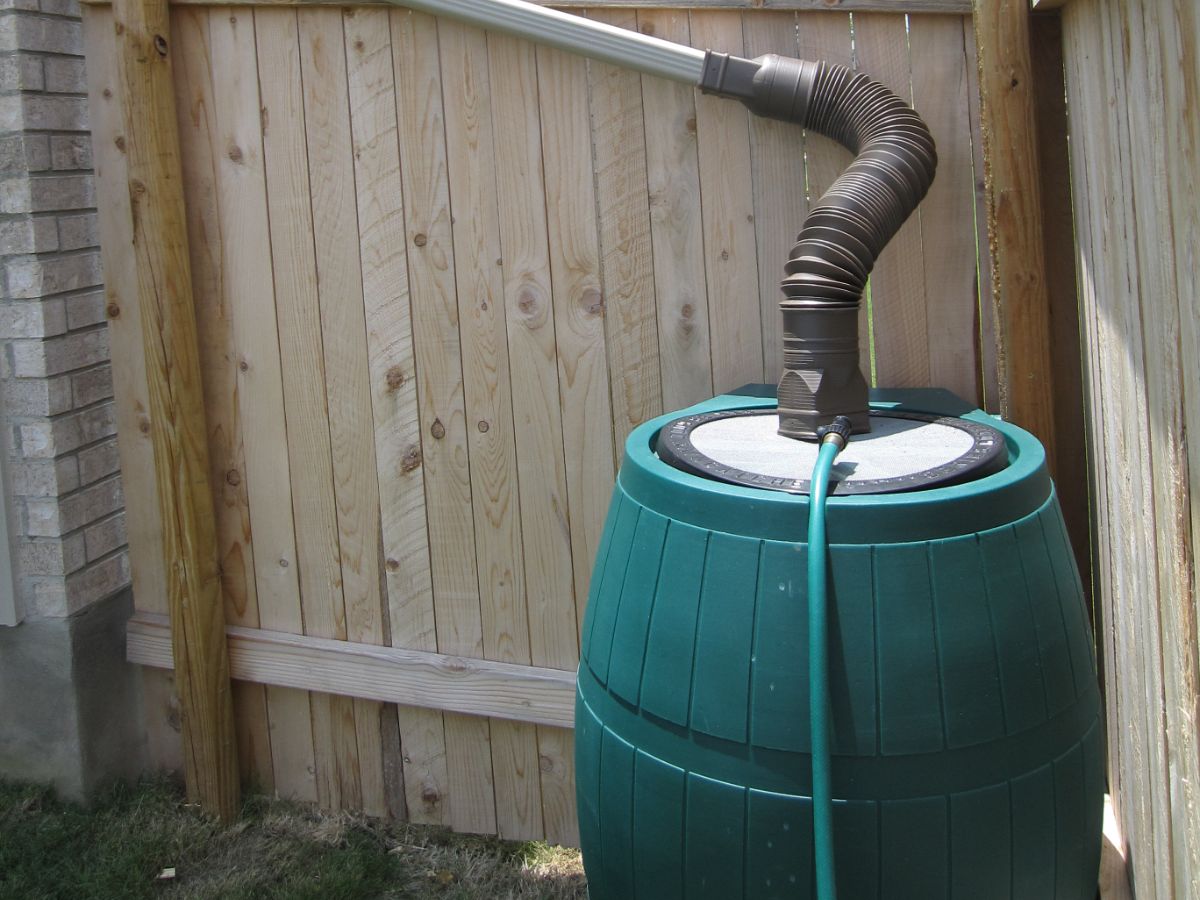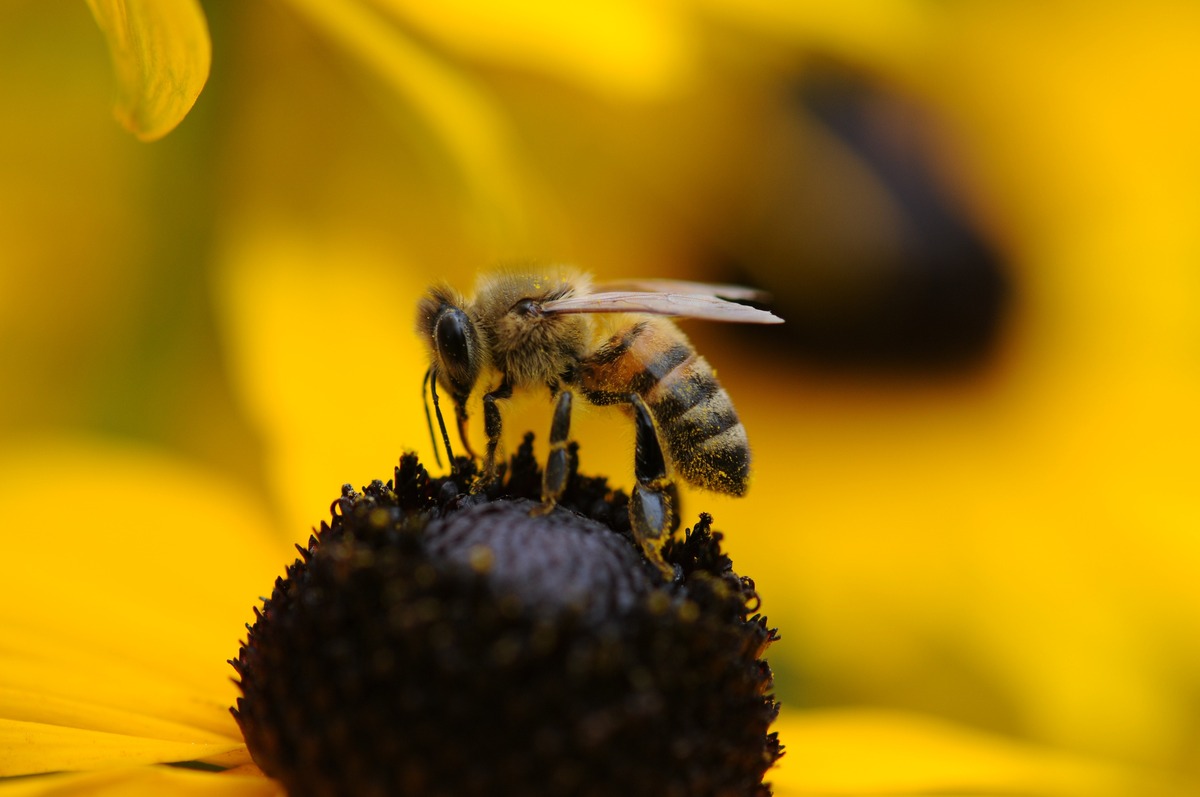
The bee aids in the pollination of foods and flowers, and the insects’ value has garnered public interest. Along with concern about monarch butterflies, people have begun to appreciate that their food and plants depend on a healthy bee population and a bee friendly environment. So how can you play your part and help save the bees?
Helping to save bees in your landscape is not difficult. From planting bee-friendly flowers to avoiding pesticides, here are seven easy ways you can help save the bees in your yard.
1. Avoid Using Pesticides
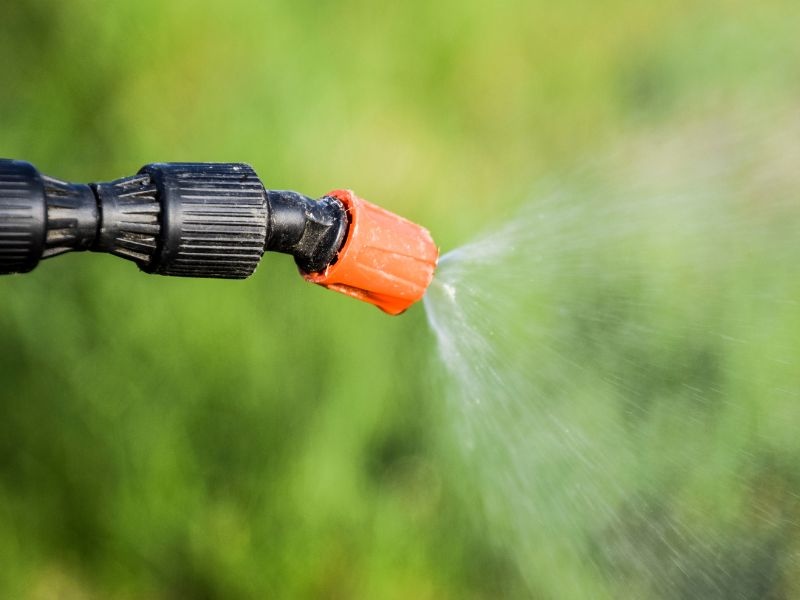
Pesticides include insecticides, fungicides, and herbicides. Even some organic pesticides can be deadly to bees. If you must use pesticides, apply them when bees are not present, such as the evening or early morning. Always read and follow label directions to ensure responsible application.
An effective way to reduce pesticide use is to practice Integrated Pest Management (IPM). It’s a comprehensive pest control approach that involves habitat manipulation, cultural control, and exclusion with little to no pesticide use.
Pro Tip: Talk to your lawn service professionals about the pesticides they might use and share any concerns you may have about the bees.
2. Grow Plants Bees Like
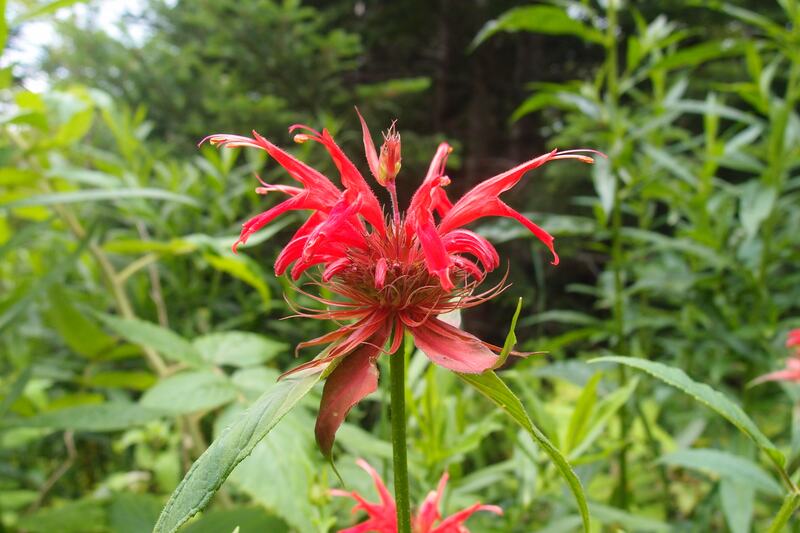
These can be annuals, perennials, bulbs, trees, shrubs and even vegetables and fruits. Native plants and wildflowers are particularly important because bees (and other insects and birds) are hard wired to seek out those plants.
Bees get most of their nectar from trees, which are loaded with hundreds of blooms compared to flowering plants in the garden. Bees hunt for plants’ nectar or pollen, which is turned into food for their young. Plants can be grown in the ground, or in containers on porches, decks, patios or balconies to support bees. Even window boxes can contain the plants bees love.
3. Provide a Water Source
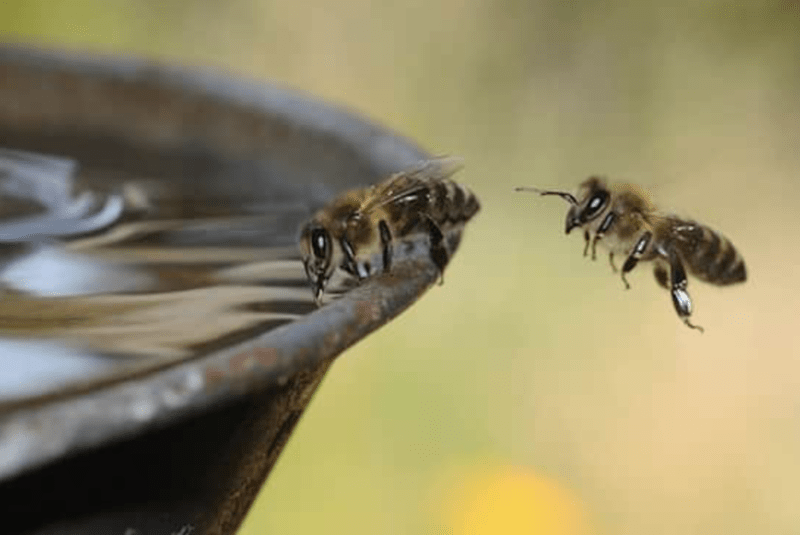
Bees will drink water from a bird bath but need to get to it without drowning. Place flat stones or other similar objects so that they are slightly above the water level in the bird bath. Bees access water from the stones. Small dishes of water with stones can work on a patio, deck or balcony. The birds will thank you, too.
4. Don’t Be Too Quick With Fall Cleanup
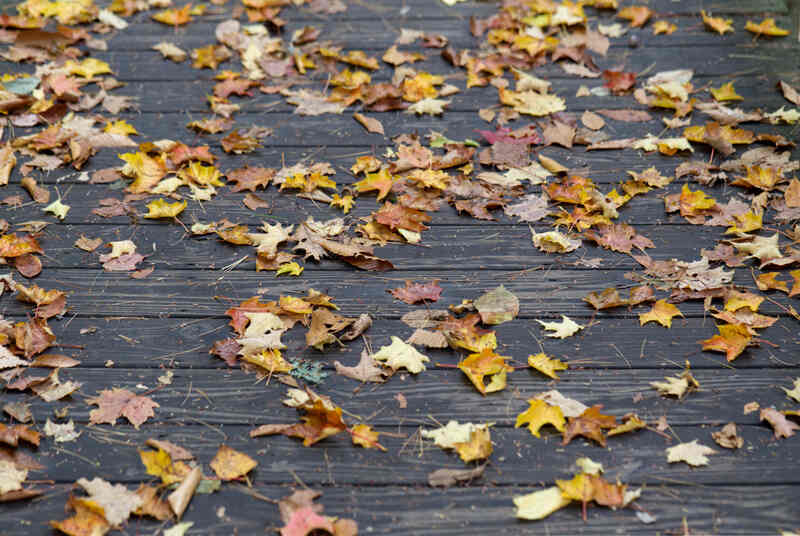
Native bees and other beneficial insects overwinter in the debris of perennials, trees and other plants. Native leafcutter bees build their winter homes in the stems of plants, for instance. Curled leaves on the ground provide safe harbor from winter weather. Cleaning up the landscape in fall not only removes a bee habitat, it’s possible you also take the insects with it.
5. Build a Bee House
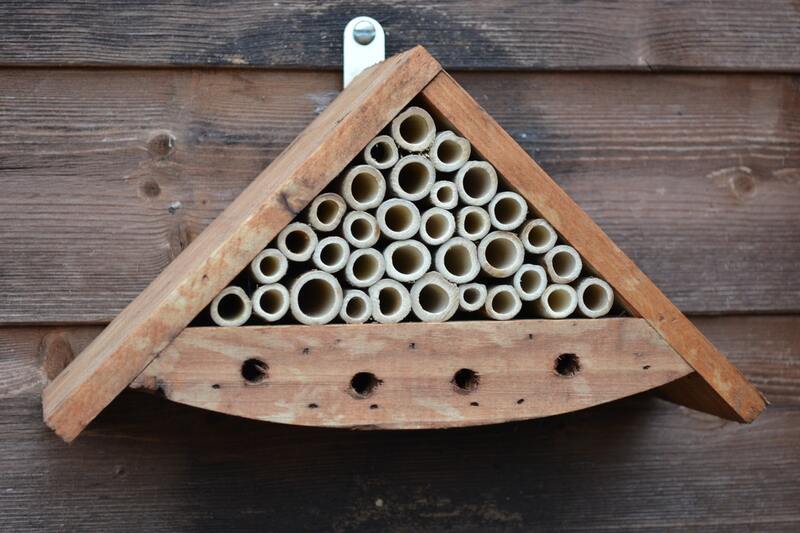
Or you can buy one. The shelter is usually a framed collection of hollow branches, such as bamboo, where bees can set up housekeeping. Bee houses are particularly useful for solitary native bees. Some bee hotels are constructed in orchards to attract and support mason and blue bees, which pollinate apples and other fruits. Research or look for reviews of bee houses to make sure you get a quality one. Poorly made ones may be dangerous or deadly to bees.
6. Support Local Beekeepers
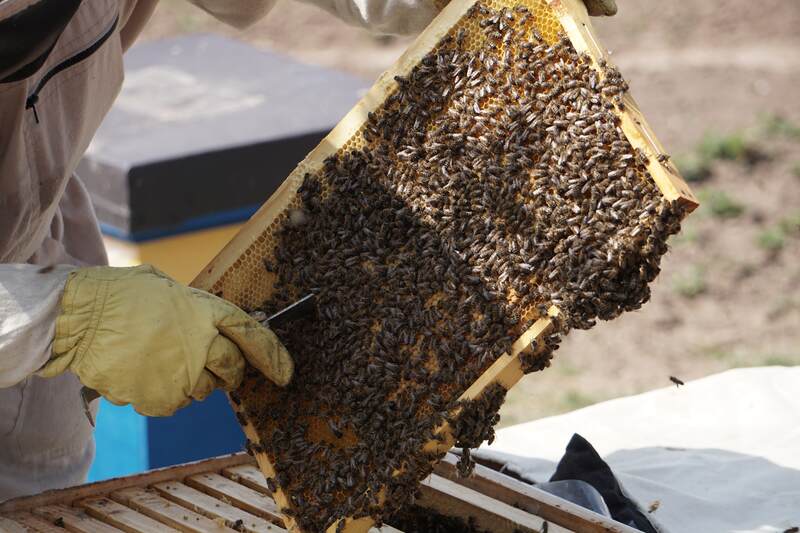
These are the folks who have hives of honeybees. Buy local honey and products made with honey, such as soaps and candles. You can usually find local honey at farmers markets and specialty food stores. Look for candles and soaps at shops that specialize in products from area artists, craftsmen, and craftswomen. If you have a swarm, contact local beekeepers to help safely move it.
7. Teach the Children
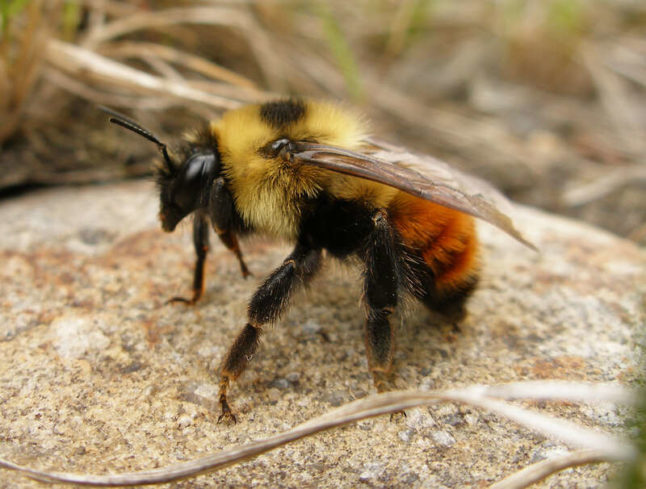
An important way to ensure our landscapes continue to have bees is to teach children about them. If you take the children out early in the morning, you’ll find bumblebees asleep on flowers. Talk about the value of bees, how they help pollinate the food the kids eat and the flowers that make their world beautiful. Take them to visit a school, park, or beekeeper’s yard to see how a beehive works. Show them how to safely act around bees without being afraid.
Note: Of course, if you’re allergic to bees, you need to be particularly careful in the garden. Most of the suggestions above don’t put you close to bees. Rather, you’re setting up a bee friendly landscape that you can sit back and enjoy from afar.
Professionals Can Help, Too
If you need help planting a pollinator garden, setting up a water feature, or adding other bee-friendly features to your landscape, contact a local landscaping or gardening professional.
Main Image Credit: Pexels

